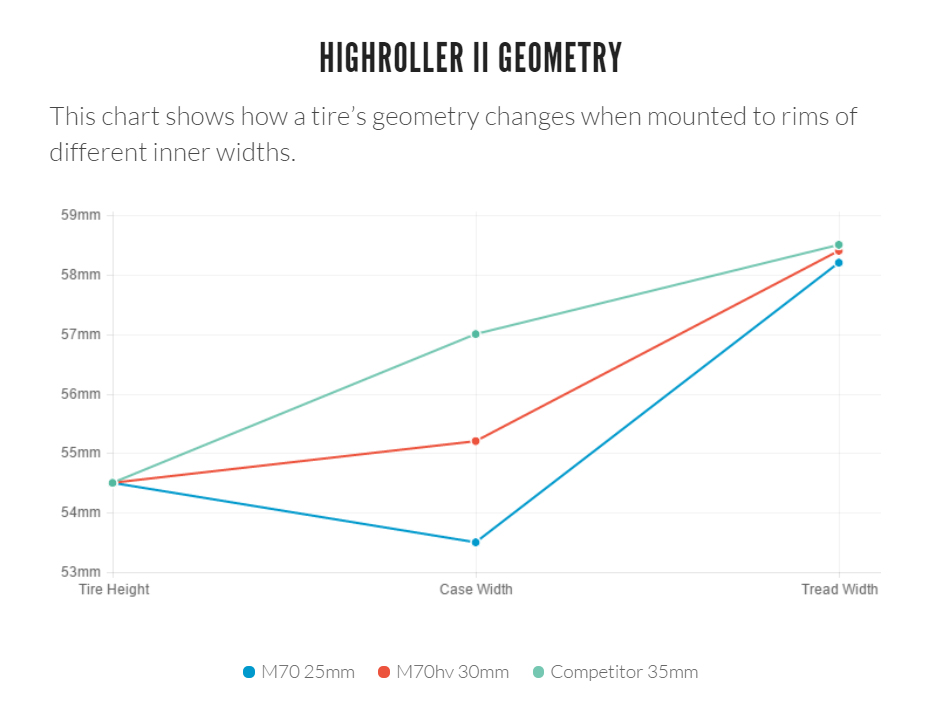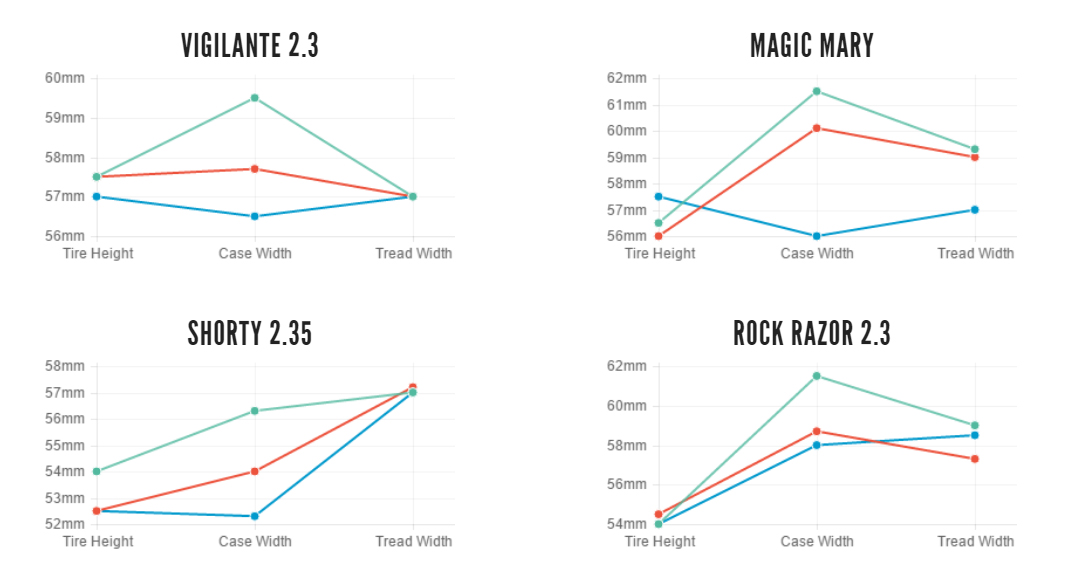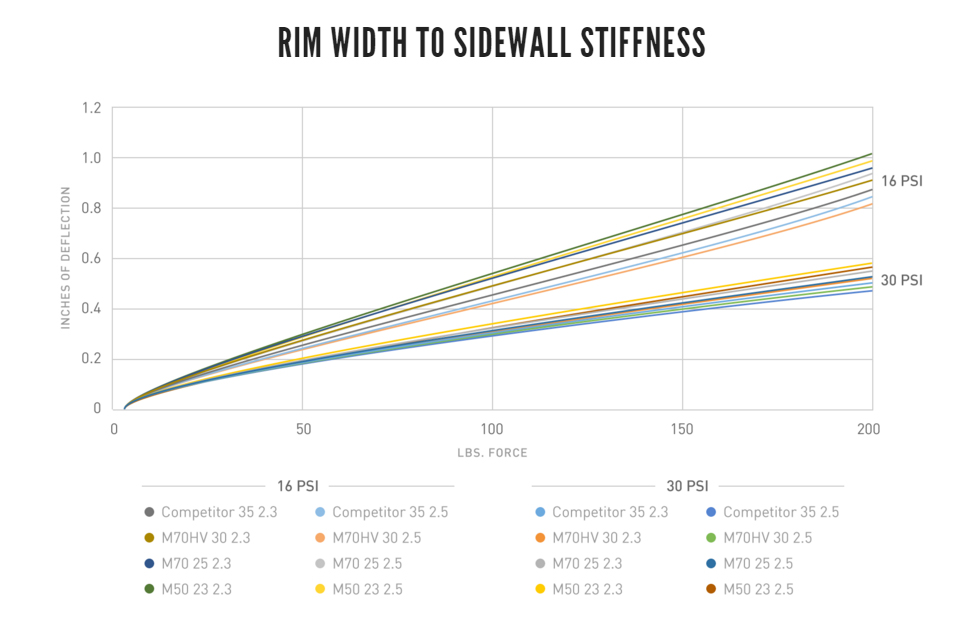These days, there’s a lot of talk in bike circles about rim widths. Super wide options are the wheel upgrade du jour, and with the use of carbon, those super wide rims can actually be manufactured at a weight that’s not downright offensive.
ENVE has recently released two of their wheelsets—the M60 and M70—in “HV” or High Volume versions. In other words, ENVEs are getting wider. We’re putting in time on both, and we’ll publish our full review of the M60 HV in a few days. But the most notable thing about the HV editions of these wheels is the the fact that they’re not anywhere close to as wide as some of the other options out there.
We looked at the WTB Asym i35 last fall and, aside from it being pretty heavy, had good things to say about it. And companies like Ibis and an assortment of Chinese manufacturers are producing much lighter rims in similarly wide widths.
But despite all this, the widest rim ENVE makes is the M70 HV, which measures 30 mm internally. ENVE’s downhill rim, the M90, is actually a bit narrower than the M70 HV (although the M90 is burlier and heavier). And even the High Volume version of the M60 still comes in at 26 mm internally. Just a few years ago, that would have been quite wide, but the times they are a-changin’.
And so, the question: with other companies’ rims measuring upwards of 40 mm internally, is ENVE just behind the times?
The answer, as it turns out, is that ENVE has good reasons for making their rims in the widths that they do. They’ve spent considerable time and resources looking into the question of rim width, then experimenting with a wide variety of widths—they’ve paired 2.3” tires with super wide rims, and 2.5” tires with narrow rims, and they’ve tried every combination in between.
What ENVE found was that, as rims get wider, the only thing that substantially changes is the casing width. The overall height of the tire and the actual width of the tread is virtually unchanged when a tire is mounted on a 25 mm, 30 mm, or 35 mm inner rim width.
Here’s the results of ENVE’s testing of their rims mounted with a Maxxis Highroller II:

Enve looked at a bunch of other popular tires and arrived at the same result:

Now, many will argue that it’s the wider casing that matters—it provides more support in corners, allows lower air pressures, and provides a more square tire profile that (arguably) corners better. And this is all true, but ENVE found that there is a point of diminishing returns at about 30 mm internal rim width. The tire that was used in this test was a 2.5” Minion.
Here’s the graph of their results:

There are a couple of interesting pieces of information in there. At higher pressure (30 psi), the 35 mm rim came out on top by a small margin with a 2.5” tire, while the 30 mm rim came out on top with a 2.3” tire.
But at lower pressure (16 psi), this is reversed: the 30 mm rim came out on top with a 2.5” tire, and the 35 mm rim had less deflection with a 2.3” tire.
The takeaway from this testing is that, with a 2.5” tire, the benefit of going wider than 30 mm is, at best, debatable. And more importantly, going wider than 30 mm means adding extra material—and thus extra weight—to the rim. Depending on the rim, adding an extra 5 mm of width adds somewhere around 30-40 grams per wheel (that’s on a M70; the increase would be a bit less on something like a M50, but quite a bit more on an aluminum rim).
ENVE’s conclusion is that the trade-off between extra support for the tire and extra weight at the rim hits an inflection point at 30 mm for 2.5” tires. And, in the case of narrower tires (2.3 – 2.4”), that inflection point is even narrower—hence the M60 HV and its 26 mm internal width.
Long story short: there’s a method to the madness.
ENVE has spent quite a bit of time determining optimal rim width for a given tire width. So in the case of the M60 HV, the 26 mm width is designed to work best with 2.3 to 2.4” tires, and provides a balance of support for the tire’s sidewall without making the rim too heavy.
Stay tuned for our full review of the M60 HV and M70 HV to see how all of this plays out on the trail.
